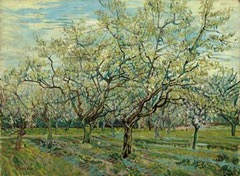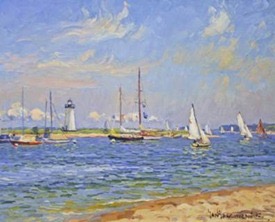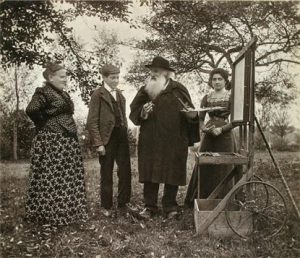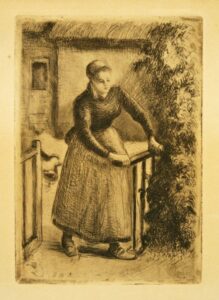Plein air painting was first popularized by the impressionists in the 1870s. For centuries artists have been painting outdoors on location, but it wasn’t until the advent of metal tubes of oil paint that painting en plein air truly became a movement. Finally, artists were able to easily transport their supplies to whatever location they chose and paint on site. Prior to the introduction of paint tubes, artists had to mix their own pigments individually each time they desired to use a particular color. Paints would dry out quickly and so it was simply impractical to attempt to move a palette and supplies outdoors, far away from one’s studio.
Impressionists fully embraced plein air painting. This method was directly in line with their goal of capturing the magic of light and the essence of the landscape. Painting on location encourages the artist to work quickly to capture the mood of the setting. This can often account for the energetic brushstrokes seen in Impressionist canvases. Artists of all time periods and styles worked outdoors from life, but often they would only sketch or draft the composition they saw before them. The final paintings were reserved for the shelter of the indoor studio. Impressionists such as Vincent van Gogh challenged this method.

When inspired by an environment, he would often work fastidiously to render the scene in paint right then and there, such as in “The White Orchard” (1888). These spontaneous paintings by van Gogh and other artists like Claude Monet and Camille Pissarro define the oeuvre of the Impressionists.
Today, Jan Pawlowski works in a similar manner to many well-known masters. “A Day for Sailing” was painted from the beach on Chappaquiddick overlooking the harbor and Edgartown lighthouse. Pawlowski was inspired by the beautiful sunny blue sky and gentle wind to capture this image of sailboats keeling in the wind in front of the lighthouse.

Many artists that we represent here at The Christina Gallery paint en plein air. Stop by and ask us to point out some paintings for you or see if you can pick out which paintings were painted en plein air on our website!



